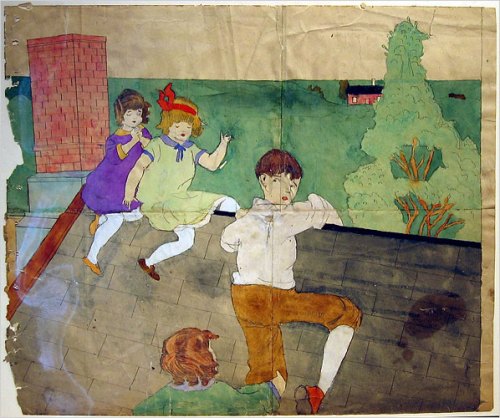Henry Darger was born in Chicago in 1892. After the death of his mother he was placed in a Catholic home for boys and then into the Lincoln Asylum for Feeble-Minded Children in rural Illinois, from which he ran away at the age of seventeen.
Darger lived a solitary life, working as a janitor in a Chicago hospital from around the age of thirty until his retirement in 1963. A devout Catholic, Darger went to mass every day. During this time Darger created the work for which he is now known. Alone in his room, unknown to those around him, he gave tangible, visible form to an epic story of legions of pre-pubescent girls—with paper-doll faces and unexpected male organs—who battle for their lives against monstrous foes who seek to torture, kill or exploit them. This, his magnum opus, is commonly referred to as In the Realms of the Unreal though Darger’s actual title is The Story of the Vivian Girls, in what is known as the Realms of the Unreal, of the Glandeco-Angelininian War Storm, Caused by the Child Slave Rebellion, and spans over 15,000 single-spaced typewritten pages. This expansive, complex narrative together with over 300 imaginatively constructed fantasy drawings have come to be regarded as one of the 20th century’s most original and unusual literary works.
It was not until after Darger’s death that the full scope of his artistic production became known. His landlord, Nathan Lerner, himself an artist and inventor, discovered Darger’s artworks after the artist was sent to a nursing home just before the end of his life. After the reclusive artist’s death, Lerner devoted much of his time and attention to the gathering and dissemination of Darger’s art and related, archival materials. Nathan Lerner died in 1997 at which point his wife Kiyoko Lerner took over managing the artist’s estate.
As Darger’s work has become better-known to both outsider-art and contemporary-art audiences in the U.S. and in Europe, it has won wide acclaim from critics, artists, art historians, curators and collectors who have recognized the withdrawn art-maker and story-teller as one of the most original talents—and as a true visionary—of his time.



